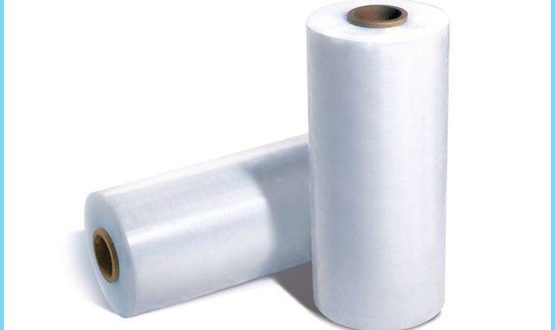High Molecular Weight (HM) plastic rolls, commonly used for packaging, agriculture, and construction, are evolving with the rise of sustainability and new manufacturing technologies. Here are key trends and innovations shaping the future of HM plastic rolls:
1. Sustainability and Eco-Friendly Materials
- Biodegradable and Compostable Plastics: As environmental concerns grow, there’s a push towards biodegradable alternatives for HM plastic rolls. Polymers made from plant-based materials (e.g., polylactic acid or PLA) are gaining traction, though they still face cost and performance challenges compared to traditional HM plastics.
- Recycled Plastics: The use of recycled plastic materials in the production of HM rolls is becoming a strong trend. Closed-loop recycling systems, where waste plastic is collected, processed, and reused, reduce environmental impact and provide a cost-effective solution.
- Reduction in Material Usage: Manufacturers are innovating to create thinner, yet stronger HM plastic films, reducing the amount of raw material needed while maintaining performance.
2. Advanced Manufacturing Techniques
- Multi-Layer Film Technology: Combining different polymers in multi-layer films allows manufacturers to create HM plastic rolls with enhanced properties, such as improved moisture barriers, puncture resistance, or UV protection.
- Nano-Enhanced Films: Nanotechnology is enabling the development of HM plastic films with superior mechanical and chemical properties. Nanomaterials embedded into the plastic can enhance strength, durability, and even introduce antimicrobial properties for food packaging applications.
- Automation and Smart Production: Industry 4.0 technologies, such as AI and IoT sensors, are being integrated into the production process to optimize efficiency, reduce waste, and ensure consistent product quality.
3. Customization and Functional Packaging
- Custom Properties for Specific Industries: Manufacturers are offering more customization of HM plastic rolls to meet specific needs, such as UV-resistant films for agriculture, or electrostatic discharge (ESD) protection for electronics packaging.
- Smart Packaging: HM plastic rolls integrated with sensors or RFID tags for tracking and monitoring conditions such as temperature and humidity are gaining interest, especially in food and pharmaceutical industries.
- Colored and Printed Plastic Rolls: Advanced printing techniques allow for high-quality graphics on HM plastic rolls, supporting branding and communication with end consumers. This trend is especially relevant in retail and packaging sectors.
4. Circular Economy and Extended Producer Responsibility (EPR)
- Closed-Loop Recycling Systems: Many companies are moving toward a circular economy approach, where HM plastic rolls are designed to be fully recyclable, and used materials are reintroduced into the production cycle. This not only reduces waste but also lowers costs for raw materials.
- Extended Producer Responsibility (EPR): Governments are increasingly implementing regulations that hold manufacturers responsible for the disposal and recycling of their products. This is driving innovation in creating more recyclable HM plastic rolls and encouraging companies to participate in take-back programs.
5. Smart and Active Films
- Active Packaging: HM plastic rolls with active components that interact with the product they contain (e.g., absorbing oxygen or releasing preservatives) are being developed to extend the shelf life of food and sensitive goods.
- Antimicrobial Films: In sectors like food and healthcare, antimicrobial HM plastic films that inhibit bacterial growth are becoming a significant trend, enhancing the hygiene and safety of packaged products.
6. Regulatory and Compliance Changes
- Bans on Single-Use Plastics: With stricter regulations on single-use plastics in various regions, HM plastic roll manufacturers are focusing on making their products reusable, recyclable, or compostable to comply with these new laws.
- Certification and Standards Compliance: Certifications for eco-friendly and sustainable packaging (such as ISO standards, FSC, or biodegradable certifications) are becoming a priority for manufacturers as they aim to meet consumer and governmental expectations.
7. Lightweighting and Performance Enhancement
- Stronger, Lighter Films: Advances in polymer chemistry are enabling manufacturers to produce thinner films that are as strong, or even stronger, than traditional HM plastics. This reduces shipping costs, lowers carbon footprint, and uses fewer raw materials.
- Barrier Properties: Enhanced barrier properties are a growing focus, particularly for applications like food packaging, where oxygen and moisture control are critical for product freshness. HM plastic rolls with improved oxygen, gas, and vapor barriers are in high demand.
8. Emerging Applications
- Agriculture and Greenhouse Films: HM plastic rolls are being developed for advanced agricultural uses, including films with improved UV protection, temperature regulation, and anti-condensation properties. These innovations help increase crop yield and improve efficiency in greenhouses.
- Construction Films: In construction, HM plastic rolls are used for moisture barriers, vapor barriers, and insulation wraps. Innovations are focused on improving durability and flexibility, as well as making these materials more sustainable.
- Medical and Healthcare Applications: HM plastic films are increasingly being used in sterile packaging and medical-grade barrier materials, where cleanliness, puncture resistance, and hygiene are critical. The development of antimicrobial HM films is particularly promising in this sector.
9. 3D Printing and Custom Molds
- 3D Printed Packaging: Though still emerging, 3D printing could play a role in the future of HM plastic production. Custom molds and small-batch production of specific shapes and sizes could allow for more flexibility in packaging design.
10. Consumer-Driven Innovations
- Transparency and Consumer Preferences: As consumers demand more environmentally responsible products, transparency regarding the materials used and recyclability of HM plastic rolls is becoming more important. Companies are innovating by providing clearer labeling on the environmental impact and recyclability of their products.
- Convenience Features: HM plastic rolls with easy-tear designs, reclosable seals, and other consumer-friendly features are trending in the retail and packaging industries. This innovation addresses both functionality and consumer demand for easy-to-use packaging.
Conclusion
The future of HM plastic rolls is increasingly centered around sustainability, improved performance, and the integration of smart technologies.
 Diverse Perspectives: Insights & Stories Exploring Ideas, Sharing Knowledge
Diverse Perspectives: Insights & Stories Exploring Ideas, Sharing Knowledge





